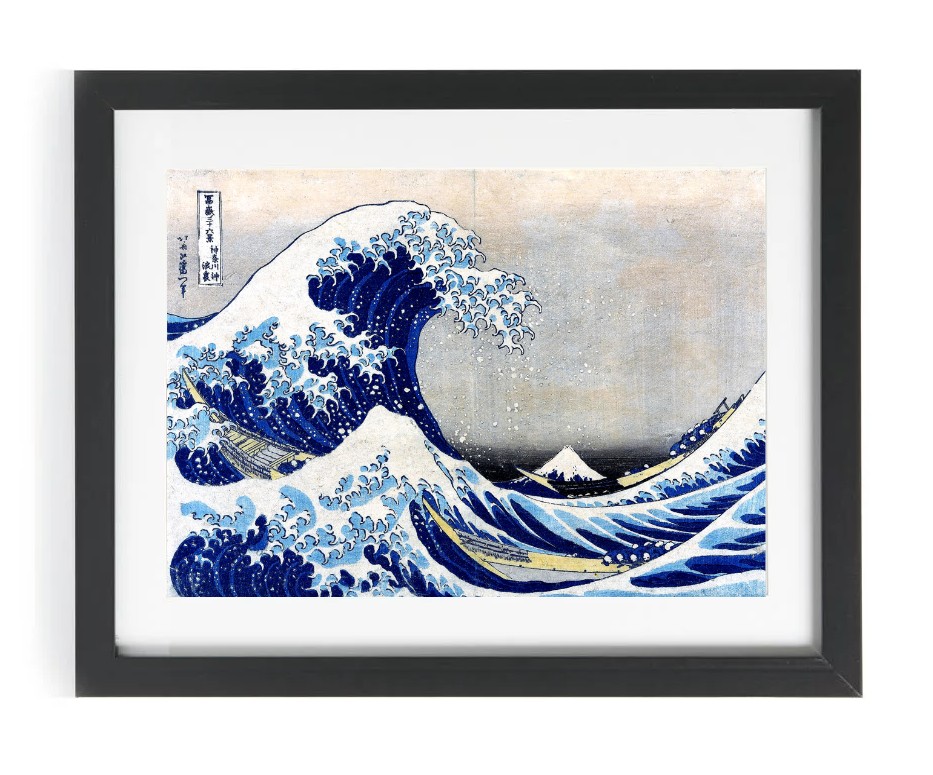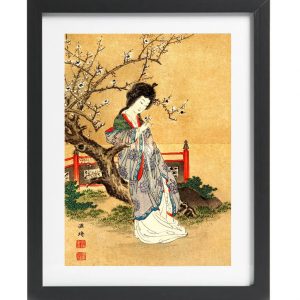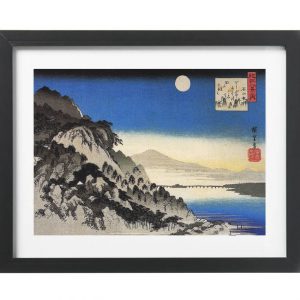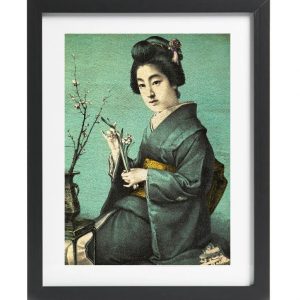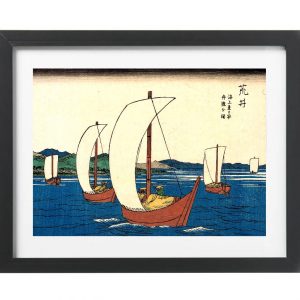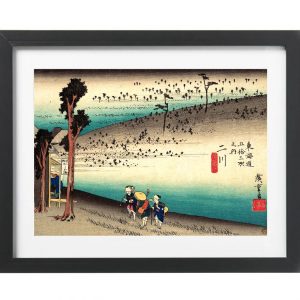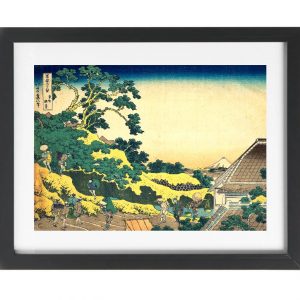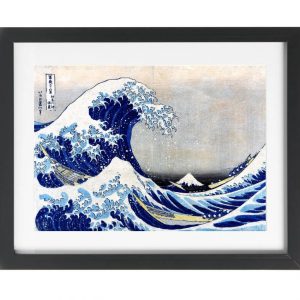Description
Please note the frame is for illustration purposes only, its there to give you an idea of how great this looks in one. This print will be provided to you on high quality card and sent in a card backed envelope to avoid bending in the post. All are prints use original high quality canon inks to avoid any fading.
Description
- This great art print is a yoko-e, that is, a landscape format produced to the oban size. The most famous image from the set is the “Great Wave” (Kanagawa oki nami ura), in which a diminutive Mount Fuji can be seen in the distance under the crest of a giant wave.
- The art is made of three main elements: the sea whipped up by a storm, three boats and a mountain. It includes the signature in the upper left-hand corner.
The Mountain
- The mountain with a snow-capped peak is Mount Fuji, which in Japan is considered sacred and a symbol of national identity and beauty. Mount Fuji is an iconic figure in many Japanese representations of famous place, as is the case in Hokusai’s series of Thirty-six Views of Mount Fuji, which opens with the present scene.
- Note the dark colour around Mount Fuji which indicates which mean the scene occurs early in the morning, with the sun rising from behind, illuminating the mountain’s snowy peak.
Boats
- In this iconic art scene there are three oshiokuri-bune, fast boats which were often used to transport live fish from the Izu and Boso peninsulas to the markets of the bay of Edo. As the name of the piece indicates the boats are in Kanagawa with Tokyo to the north, Mt Fuji to the northwest, the bay of Sagami to the south and the bay of Tokyo to the east. The boats, oriented to the southeast, are returning to the capital.
- There are eight rowers per boat, clinging to their oars. There are two more passengers in the front of each boat, bringing the total number of human figures in the image to thirty. Using the boats as reference, one can guess the size of the wave: the oshiokuri-bune were generally between 12 and 15 meters long, and noting that Hokusai stretched the vertical scale by 30%, the wave must have been between 10 and 12 meters tall in size
Sea and waves
- Note the details of the small wave, with similarity to the silhouette of Fuji
- The sea dominates this art composition as an extending wave about to break. In the moment captured in this image, the wave forms a circle around the center of the design, framing Mount Fuji in the background. A really wonderful piece of art.
About The Artist Hokusai
- Hokusai began painting when he was six years old. At age twelve, his father sent him to work at a booksellers. At sixteen, he was apprenticed as an engraver and spent three years learning the trade. At the same time he began to produce his own illustrations. At eighteen he was accepted as an apprentice to Katsukawa Shunsho, one of the foremost ukiyo-e artists of the time.
- In 1804 he became famous as an artist when, during a festival in Tokyo, he completed a 240m painting of a Buddhist monk named Daruma. His Thirty-six Views of Mount Fuji, from which The Great Wave comes, was produced from in around 1830.
Please note the frame is not included, its there to give you an idea of how great this looks in one. This print will be provided to you on high quality card and sent in a card backed envelope to avoid bending in the post. All are prints use original high quality canon inks to avoid any fading.
The size of this print is A4 which is 210mm by 297mm
To ensure the print looks even with no funny borders we may have cropped the original work in order to fit to modern A4 print size as A4 did not exist when this was painted.
